ATR Aircraft have some advantages compared to small jet-powered aircraft – simply put, they consume a lot less fuel than their counterparts. Now they want to push home that advantage, to offer premium cabin configurations.
They call this ATR Highline.
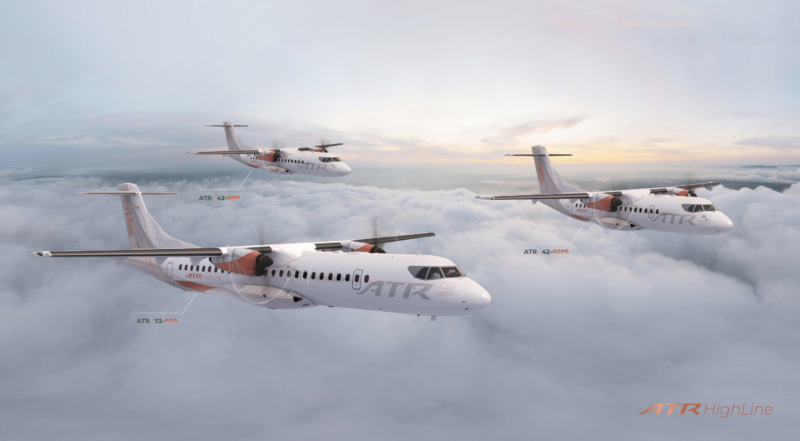 .
.
The concept takes the ATR Aircraft family and offers five different cabin concepts that can be applied, depending on the application. The cabins will be available to commercial and business operators.
The ATR HighLine collection comprises five main cabin configurations that cover the different operational needs of air carriers seeking to offer a premium flying experience to their guests:
- “Multi-Class” – featuring a spacious layout with a 50-seat interior including a dedicated first-class section. Consider this a step into a commercial operator operating a two-class operation, within a scope clause for those who need to offer a two-class service
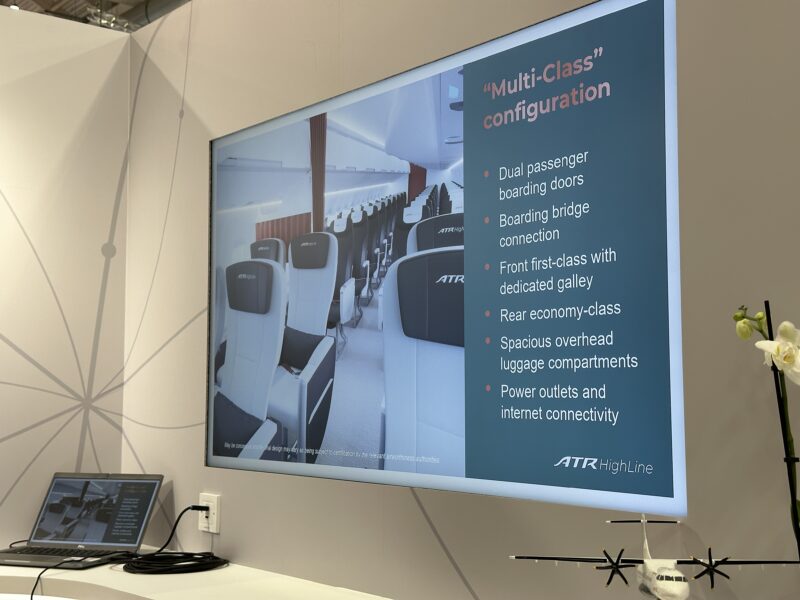
- “Premium-Flex”- with the ability to quickly convert standard double-seats into single premium seating with ATR’s unique “X-Space Table” concept, ideal for boutique airlines and charter operators. The idea is this could be a quick-change aircraft, or configurable cabin as needed. Whilst it could be reconfigured in a turnaround, it would be better to change it at its base after commercial service is complete.
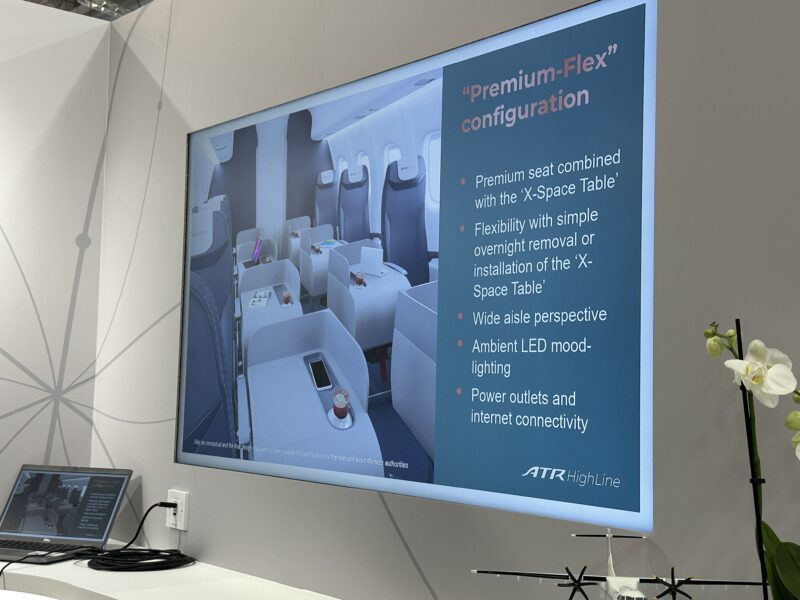
- “All-Business Class” – cabins that can accommodate up to 30 guests to match the requirements of Part 135 and semi-private airlines. Consider this the business charter aircraft, where you need a high-quality cabin. and limited people aboard
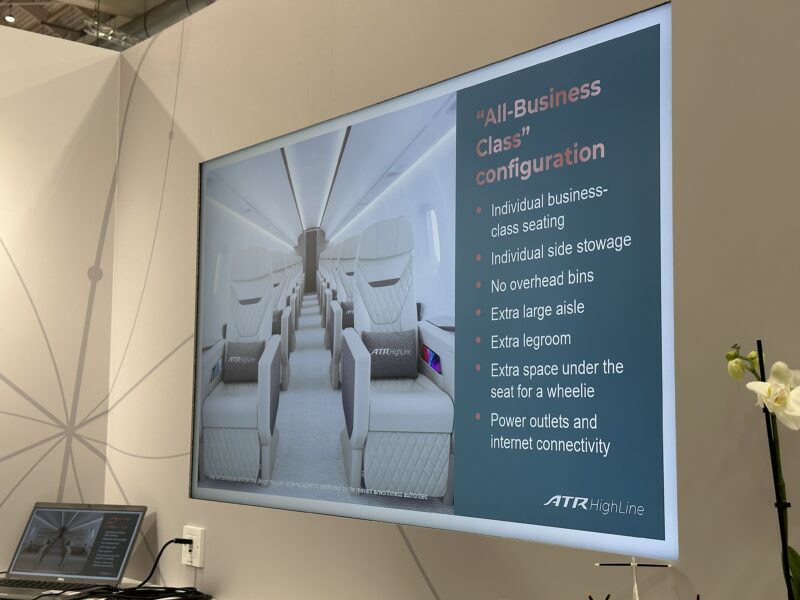
- “Multi-Section” – interiors ensuring transport for Heads of State and Government representatives. Consider having the VI at the front of the aircraft, whilst the press and entourage can be seated in the rear.
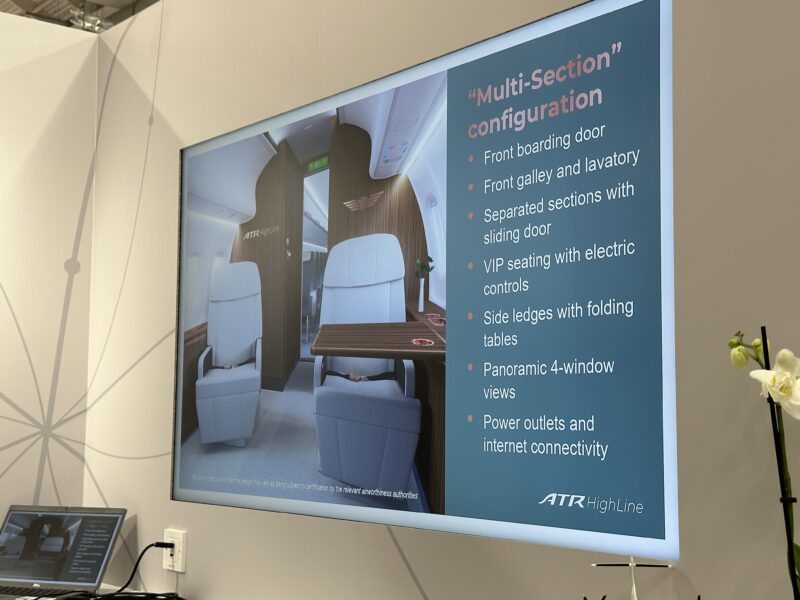
- “Bespoke VIP” – can be tailored to reflect personal lifestyles, operator’s needs or high-end destinations requiring a luxurious experience. Providing you can pay for it, you can have the cabin of your dreams.
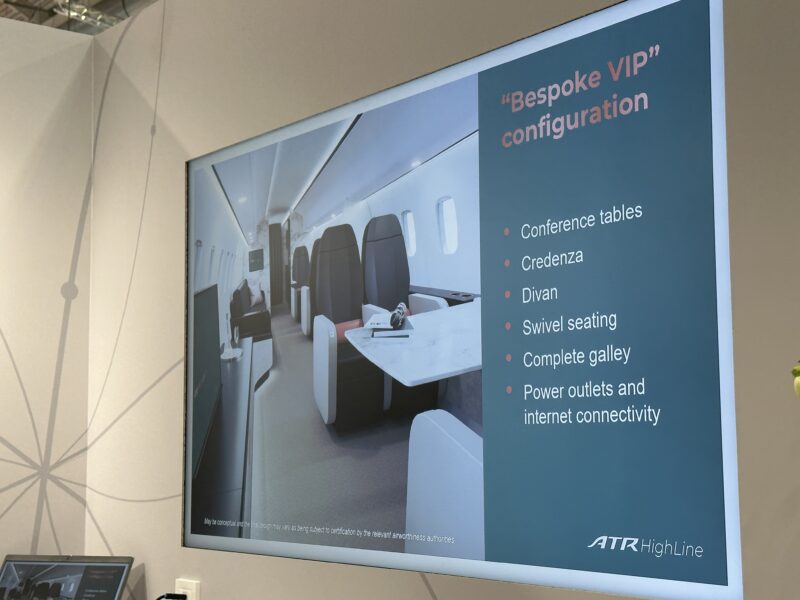
What’s the advantage here?
To sum it up, in three lines (as quoted by the ATR presentation):
- The Capacity of the largest business jet
- The Cost of a Mid-sized Private Jet
- The environmental impact of a small private jet.
They offer a responsible choice to commercial and business aviation operators, as ATR aircraft burn 45% less fuel and emit 45% less CO2 than regional jets.
Operators can benefit from premium cabin design and volume, unrivalled airport accessibility, and low emissions on regional routes.
Noise within the cabin can be minimised too to allow for a noise floor equivalent to a private jet.
The aircraft can be any from the ATR Fanily (eg ATR42-600, ATR-42-600STOL or ATR72-600) and be customised with the interior and connectivity opinions as needed), offering a range between 1,465 NM (2,710km) to 1,820 NM (3,370km) based on 30 passengers.
And if you need a reminder, they’re powered by Pratt and Whitney PW127XT Turboprop engines.
In Quotes
ATR Head of Business Development, Tarek Ben Omrane, said:
“ATR aims to disrupt the regional travel industry from within by creating a superb onboard atmosphere and using the lowest emission technology on the market. Equipped with the ATR HighLine cabins, our aircraft offer the same cabin size as the largest business jets while cutting carbon emissions in half. We are the only aircraft manufacturer in the world to offer this”.
A different direction for ATR
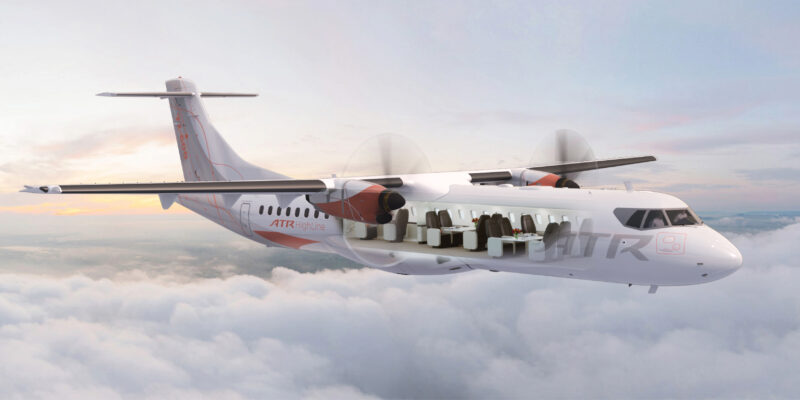
Whilst work continues with the EVO programme, it is welcoming to see the airframer go beyond the 42/72 seater configurations and press home the advantages it has – be it from an environmental side, or to offer choice in the cabin to allow airlines and operators to configure aircraft for premium passengers.
And there are a lot of good innovations we’ve seen over the years, which now are being put together to offer options for the cabin – be it the environmentally friendly business shuttle, to replacing older 50-seater aircraft (and there are plenty of those that are nearing the end of their days).
ATR representatives at Aircraft Interiors Expo noted there was more than a little interest in the concepts presented – and I can see benefits in a lot of the designs, especially the 50-seater design.
I’ll be keeping more than an eye open – this has real possibilities for the passenger.
Welcome to Economy Class and Beyond. Your no-nonsense guide to network news, honest reviews, in-depth coverage, unique research, as well as the humour and madness I only know how to deliver.
Follow me on Twitter at @EconomyBeyond for the latest updates, as well as Mastodon too! You can follow me on Instagram too!
Also, remember that we are part of the BoardingArea community, bringing you the latest frequent flyer news from around the world.
Interesting on the “X-Space” Table. JSX has this on one side on its ER4 aircraft (though it isn’t convertible back to a seat). Quite a nice solution versus wider seats, but can offer more legroom and elbow room. I imagine this is quite an advantage as it doesn’t require messing with seat tracks and other cabin infrastructure, or worrying about misaligned PSUs overhead, so configurations could be changed relatively easily.
Interestingly, I covered X-Space last year – where it was very much a “beta” product (https://economyclassandbeyond.boardingarea.com/2022/07/25/aix22-atr-show-off-their-new-concept-seat/)
It then was very much a concept looking for a solution. It seems with the convertible configuration, they have the option open to the up, whist keeping the option for density if neede – which is good to see for cabin choice.
With the new cabin configs on offer, it can very much appeal to the ERJ-145 operators who are more of a boutique carrier and want to offer a better experience.
It’ll be interesting to see if anyone picks up the config – bear in mind those ERJs aren’t getting any younger…